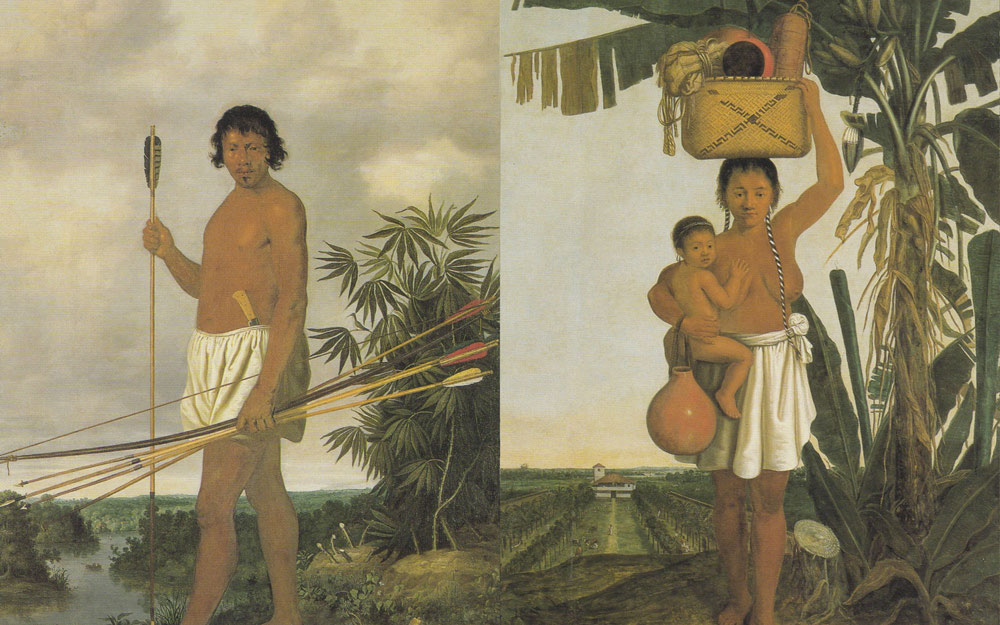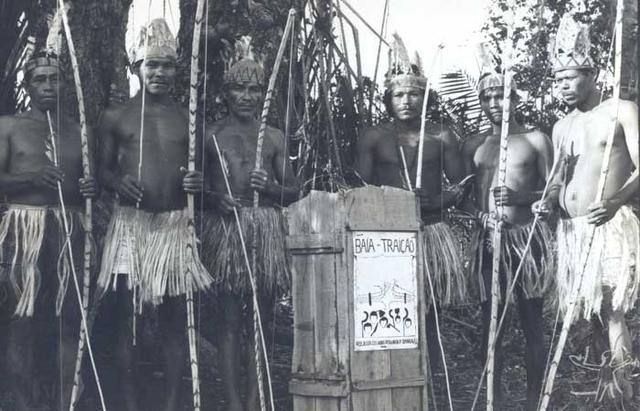History
Potiguara Nation
The Potiguara (Tupi term for shrimp eaters) are part of the Tupi Guarani linguistic family and dwelt Paraíba, Rio Grande do Norte, Ceára and Maranhão’s entire coast.
It is estimated that their population reached the hundred thousand mark, until the Portuguese came on 1500. At the beginning, conflicts were rare, but, along the time, indigenous found their lands threated and reacted with strength.
And so it began the saga of one of the bravest autochthonous cultures of Brazil. During the XVI and XVII centuries, natives resisted to the Lusitanian colonizing project. Allying, first, to the French, then the Dutch. When the latter were expelled from Brazil, in 1654, retaliation came fast and a big part of their population disappeared, despite the Régia Law of 1548, determining that Indians should receive good treatment.

Protections and acknowledging laws kept being written like the Charter of Novermber 23rd 1700, that established a league of land to every 100 couples village, corroborated, after, by the Law of Lands of 1850 and the 1860 Law, the secured land for the indigenous villagers.
On practice, the indigenous were left for their own fortune, but they kept themselves, with some tranquility, on Paraíba’s North coast, between the Camaratuba and Mamanguape rivers.
On the beginning of the XX century, when they were relatively stabilized on their lands, even without demarcation homologation, the Potiguara territory was once again usurped by invaders.
First, with the construction of Rio Tinto’s Fabric Company, of the Swedish immigrant family, the Lundgren (see section Invaders of the XX Century), located on the banks of the Mamanguape’s River, where great deforestations occurred.

During the 70’s, the sugar cane, protagonist during the XVII century would return to scene, as a monoculture on the alcohol plants, invading and surrounding the few native lands of sugar cane plants.
The Potiguara, then, used their warrior spirit and fought for their rights. The weapons, this time, would be arguments and convictions. They organized themselves and seek acknowledgment.
On 1991, finally, the first demarcation of Potiguara Indigenous Lands was concluded, delimiting a territory of 21,238 hectares. Two years later the TI Jacaré de São Domingos was homologated with 5,032 ha.The battle for justice, however, still stands. The TI Potiguara of Monte-Mor, with 7,487, that aims to recover the areas taken by the textile industry and by some sugar plants, still need to be homologated.
Next to Guaju’s River Bar, on the Sagi Village, on Rio Grande do Norte, the Trabanda village, where 1-3 families live, did not even have its 75 hectares of land demarcated. The nucleus represents the last reminiscent of Potiguara Indians in the State, where, whoever is born there is called potiguar.